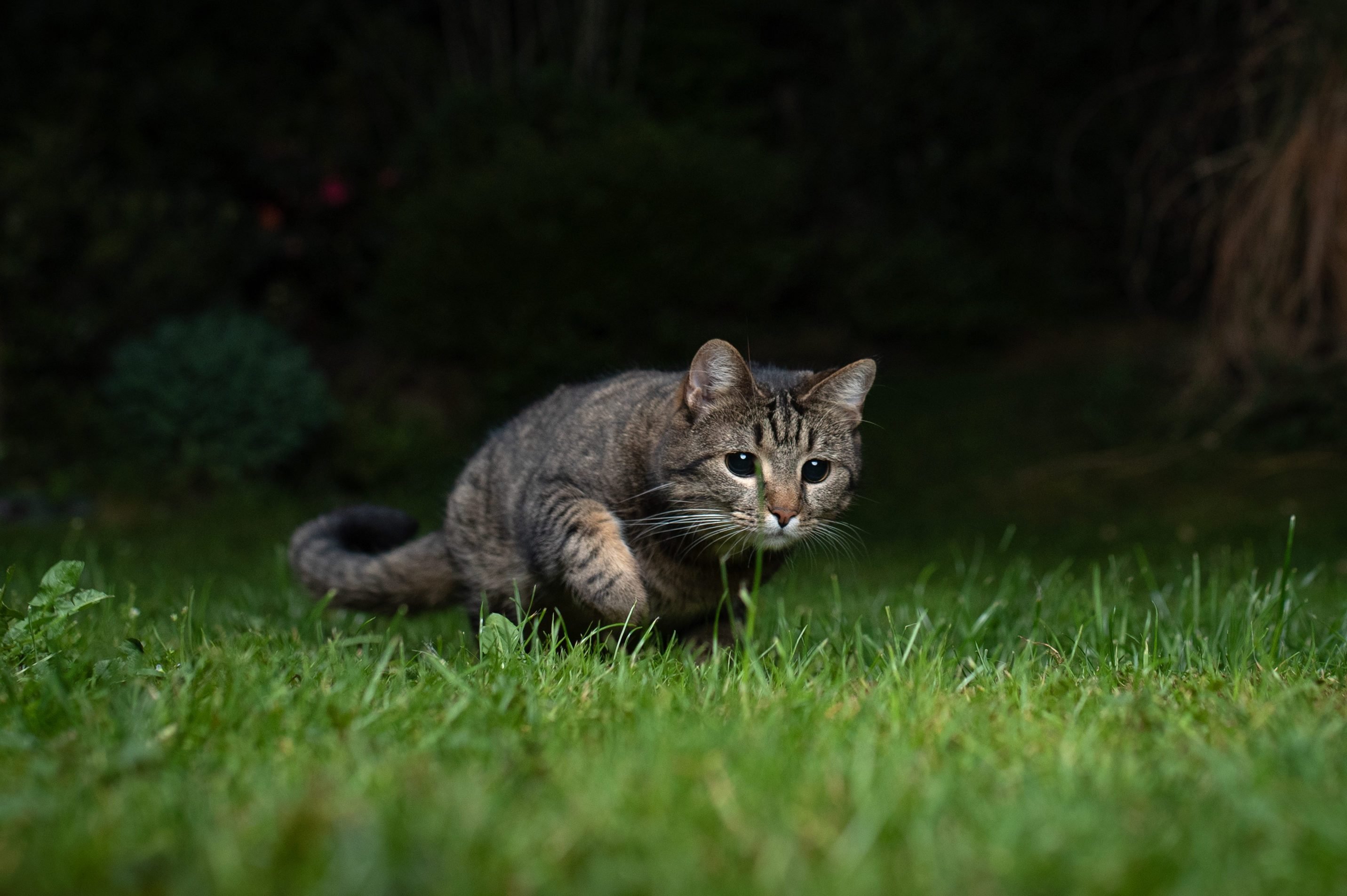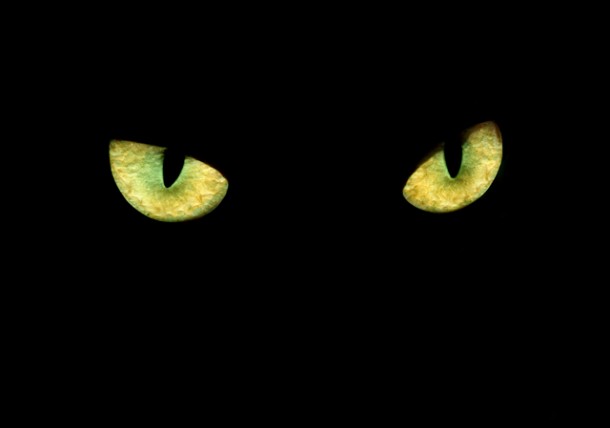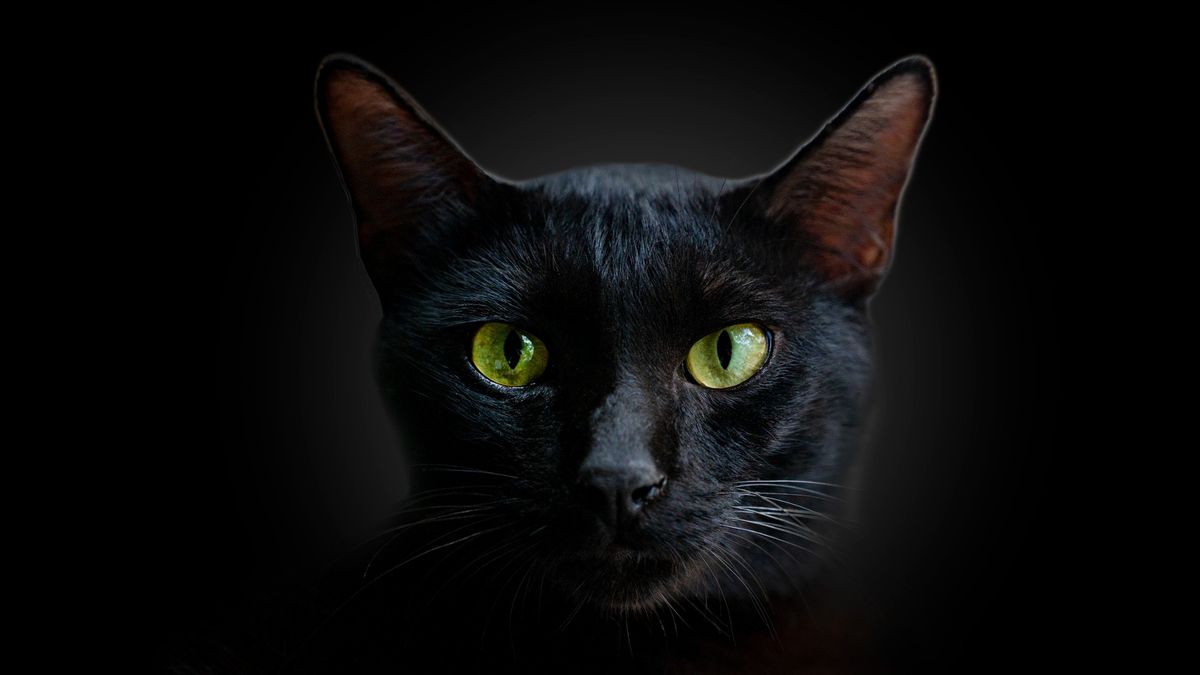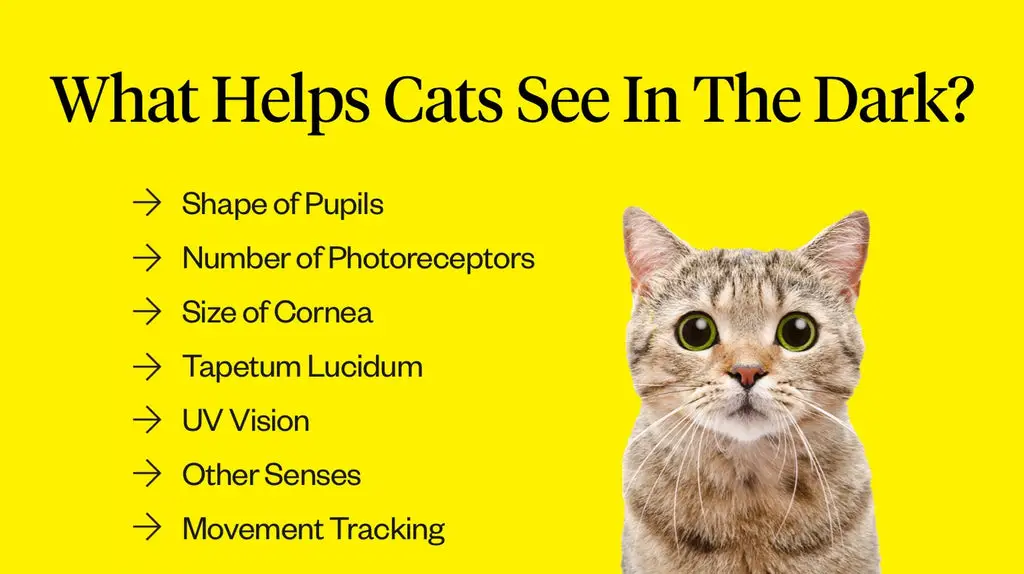Cats can see in the dark because they have more rod cells in their eyes. These cells enhance their night vision.
Cats have exceptional night vision, allowing them to navigate in low-light conditions with ease. Their eyes contain a higher number of rod cells, which are more sensitive to dim light compared to human eyes. This adaptation helps them hunt and stay alert during nighttime.
Cats also have a reflective layer behind their retinas called the tapetum lucidum, which improves their ability to see in the dark by reflecting light back through the retina. This combination of features makes cats adept at seeing in near darkness, giving them a distinct advantage in their nocturnal activities.
Cat Vision Vs. Human Vision
Cats possess superior night vision due to a higher number of rod cells in their retinas. These cells enhance their ability to see in low light conditions. Their eyes also have a reflective layer, the tapetum lucidum, which boosts their night vision even further.
Anatomy Of The Eye
The eyes of cats have a unique structure. Their retina contains more rod cells. Rod cells are sensitive to low light. This helps cats see better in the dark. Cats also have a tapetum lucidum. This layer reflects light back through the retina. It makes their eyes glow in the dark. Human eyes do not have this layer.
Differences In Light Perception
Cats can see in one-sixth of the light humans need. They have more rod cells than humans. Rod cells detect motion and light. Human eyes have more cone cells. Cone cells detect color. This means cats see fewer colors. But they see better in the dark.
The Role Of Rod Cells
Cats have many rod cells in their eyes. These cells help them see better in low light. Rod cells are more sensitive to light than other cells. This allows cats to detect small amounts of light. Their eyes have a higher rod cell density than human eyes. This is one reason why cats can see well in the dark.
Rod cells are designed to work best in dim light. They do not detect colors but are very good at sensing movement. This helps cats hunt at night. The high number of rod cells helps cats see in near darkness. This is why your cat can navigate your home at night with ease.
Tapetum Lucidum: Nature’s Mirror
Cats have a special layer in their eyes called the tapetum lucidum. This layer acts like a mirror. It reflects light that enters the eye. The reflected light gives cats a second chance to see. This helps them see better in low light. The tapetum lucidum makes cats’ eyes glow in the dark. This glow is usually green or yellow.
The tapetum lucidum improves cats’ night vision. It makes their eyes more sensitive to light. This helps them hunt and navigate in the dark. Cats can see in very dim light, unlike humans. They only need one-sixth of the light humans need. This makes them excellent night hunters.
Pupil Shape And Size
Cats have vertical slit pupils. These pupils can change size quickly. This helps cats see better in different light. In bright light, the slits get smaller. In dim light, they get larger. This helps control how much light enters the eye. The shape of the pupil helps cats focus better. It also helps them judge distances accurately. This is important for hunting. Their eyes can adjust faster than human eyes.
Cats can control the amount of light that enters their eyes. They have a special muscle in their eyes. This muscle changes the size of the pupil. This allows more or less light to enter. In low light, the pupils become very large. This helps them see better in the dark. Their eyes have a layer called the tapetum lucidum. This layer reflects light back through the retina. This makes their eyes glow in the dark. It also improves their night vision.
The Role Of The Retina
The retina contains special cells. These cells are called photoreceptor cells. They help cats see in the dark. Two types of photoreceptor cells exist. They are rods and cones. Rods detect light and motion. Cones see color. Cats have more rods than cones. This helps them see in low light.
Cats’ eyes send signals to their brain. The brain processes these signals. This helps cats understand what they see. Rods send signals faster than cones. This helps cats see better at night. Cats’ brains are good at processing these signals. This makes their night vision very sharp.

Credit: www.rd.com
The Importance Of Whiskers
Cats use their whiskers to feel around. Whiskers help them sense objects in the dark. These hairs are very sensitive. They can detect the smallest changes in the air. This helps cats avoid obstacles.
Whiskers help cats move without bumping into things. They can even sense prey nearby. This ability is important for hunting at night. Cats rely on their whiskers to stay safe and find food.
Behavioral Adaptations
Cats are excellent hunters. They stalk their prey silently. Their eyes help them see in the dark. This helps them catch mice and other small animals. Cats move slowly and quietly. They wait for the perfect moment to pounce. Their whiskers help them sense nearby objects. This makes hunting easier for them.
Cats are very quiet when they move. They walk on their toes. This makes them almost silent. Their paws have soft pads. These pads help them move without making noise. Cats also have flexible spines. This allows them to jump and twist easily. Their tails help them balance. This makes them great at sneaking up on prey.

Credit: www.texvetpets.org
Comparisons With Other Animals
Cats possess superior night vision compared to many animals due to their large corneas and retinas. Their eyes contain more rod cells, enhancing their ability to see in low light.
Nocturnal Predators
Cats have an edge over many nocturnal predators. Their eyes have more rod cells. These cells help them see in low light. Owls and bats also hunt at night. Yet, cats can see better in dim light.
Evolutionary Advantages
Seeing in the dark gives cats a big boost. They can hunt more effectively. This helps them find food when it is scarce. Their eyes also have a tapetum lucidum. This layer reflects light, making their vision sharper at night. Cats’ eyes also adjust quickly to changes in light. This helps them move easily from light to dark areas.

Credit: www.livescience.com
Frequently Asked Questions
Can Cats See In Total Darkness?
Cats cannot see in total darkness. They need some light to see. Their eyes are highly sensitive and can see in very low light.
What Does A Cat’s Vision Look Like?
A cat’s vision is blurry and less colorful compared to humans. They see better in low light and detect motion easily. Cats perceive blues and greens but struggle with reds and pinks. Their field of view is wider, around 200 degrees, aiding in hunting.
Why Do Cats Stare At You In The Dark?
Cats stare at you in the dark due to their excellent night vision and natural curiosity. They feel safe and are intrigued by your movements.
Can Cats Have Night Blindness?
Cats rarely suffer from night blindness. They have excellent night vision due to their large corneas and tapetum lucidum.
Conclusion
Cats have remarkable night vision due to their unique eye structure. Their large corneas and pupils capture more light. This allows them to see in low-light conditions. Understanding this fascinating trait enhances our appreciation for these incredible animals. So, next time you see your cat at night, marvel at its natural night vision.

Hello, this is Frank Swanson, the owner, and operator of Pet Info Hut. I created this website as a way to share my love of pets with the world. I have over 7 years of experience working with animals, and I have a passion for helping people care for their pets. I hope that you find my website useful and informative. Thanks for visiting!
